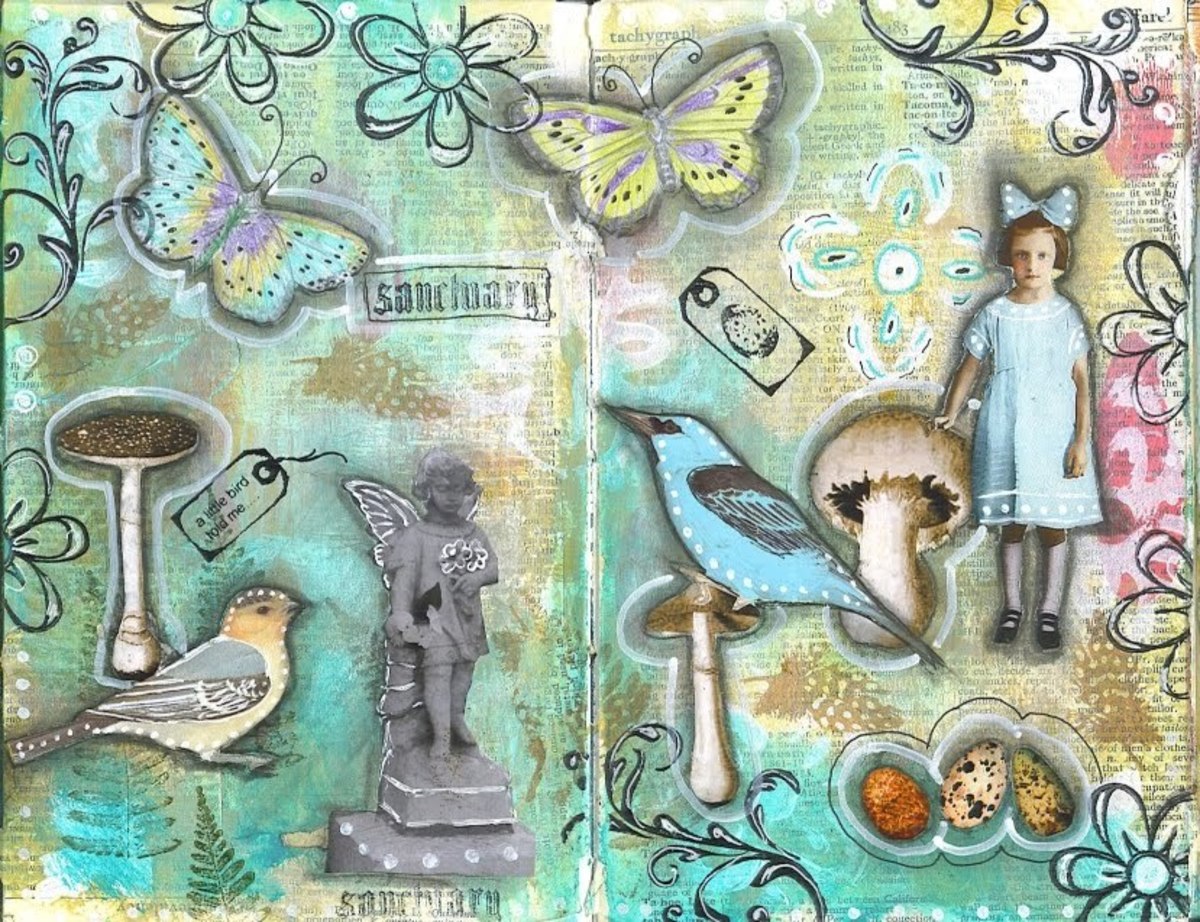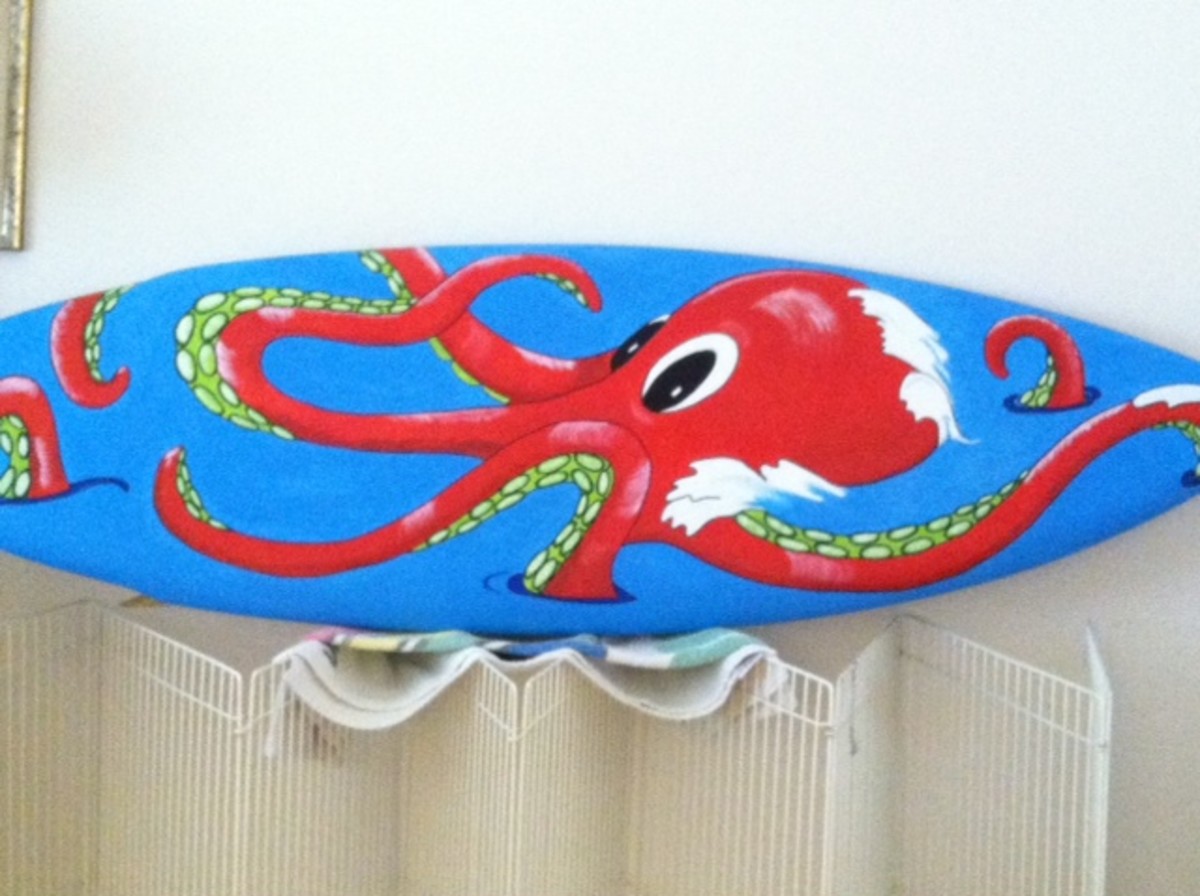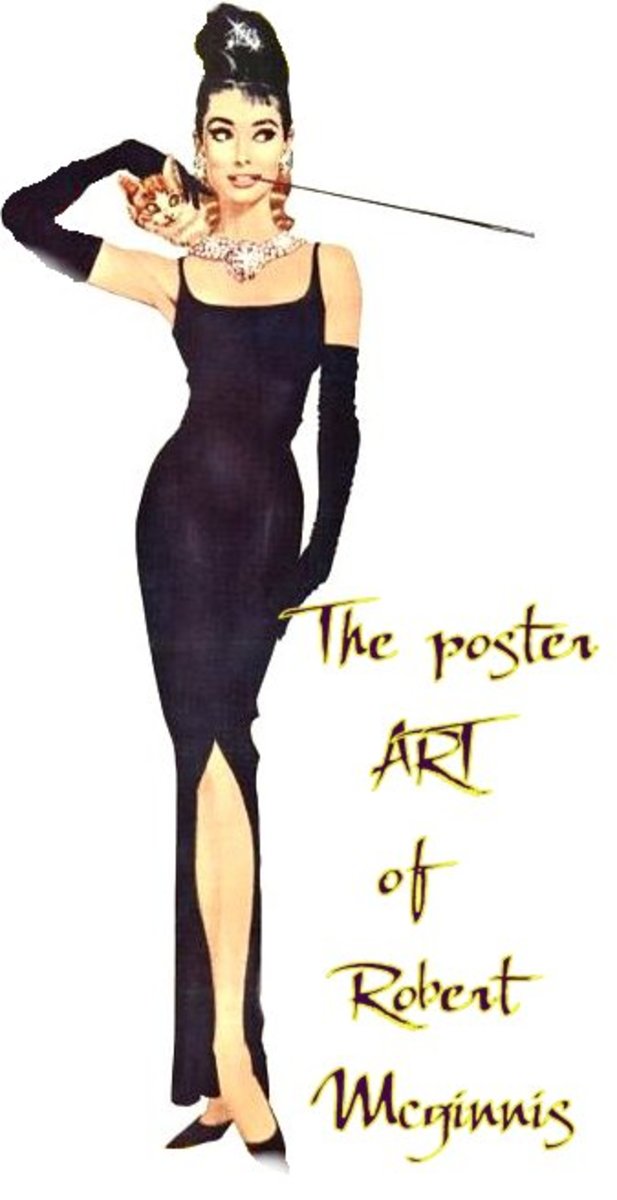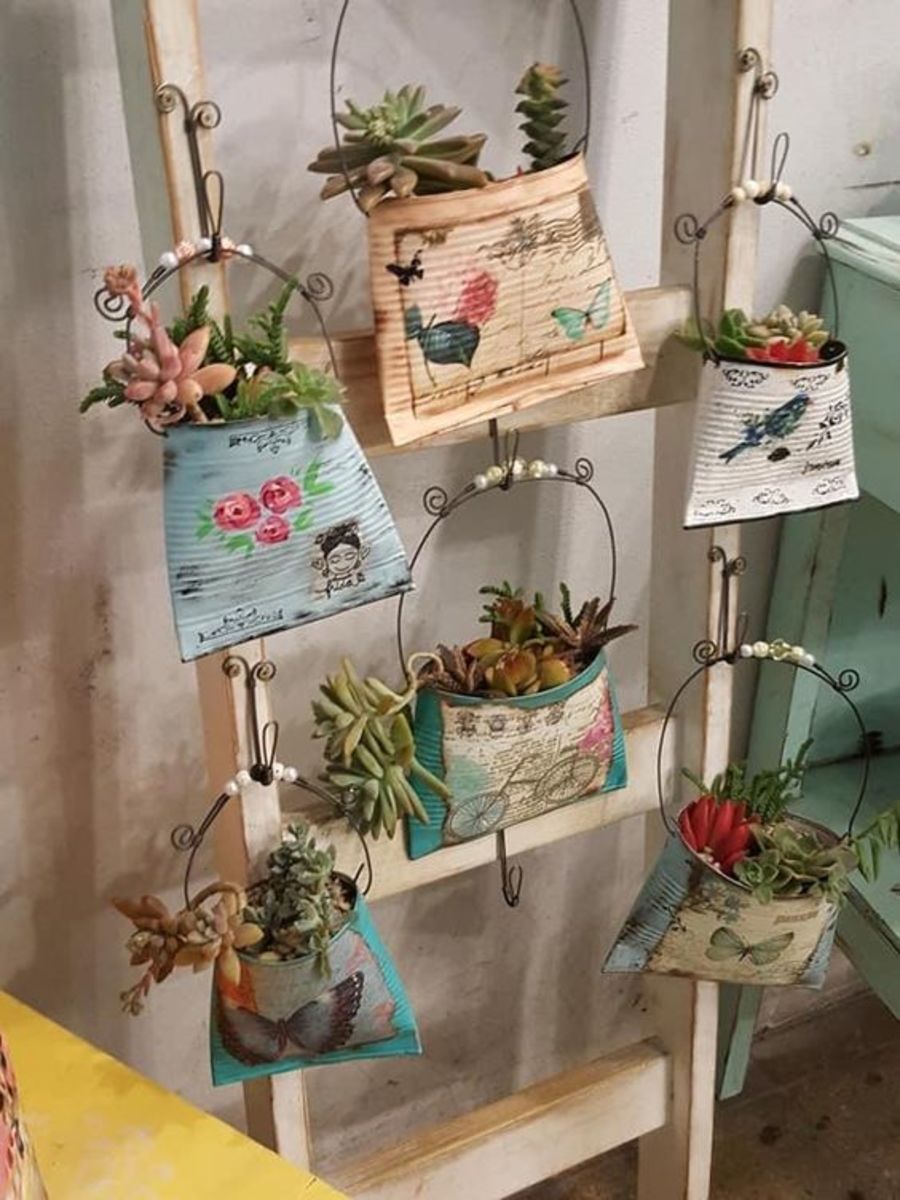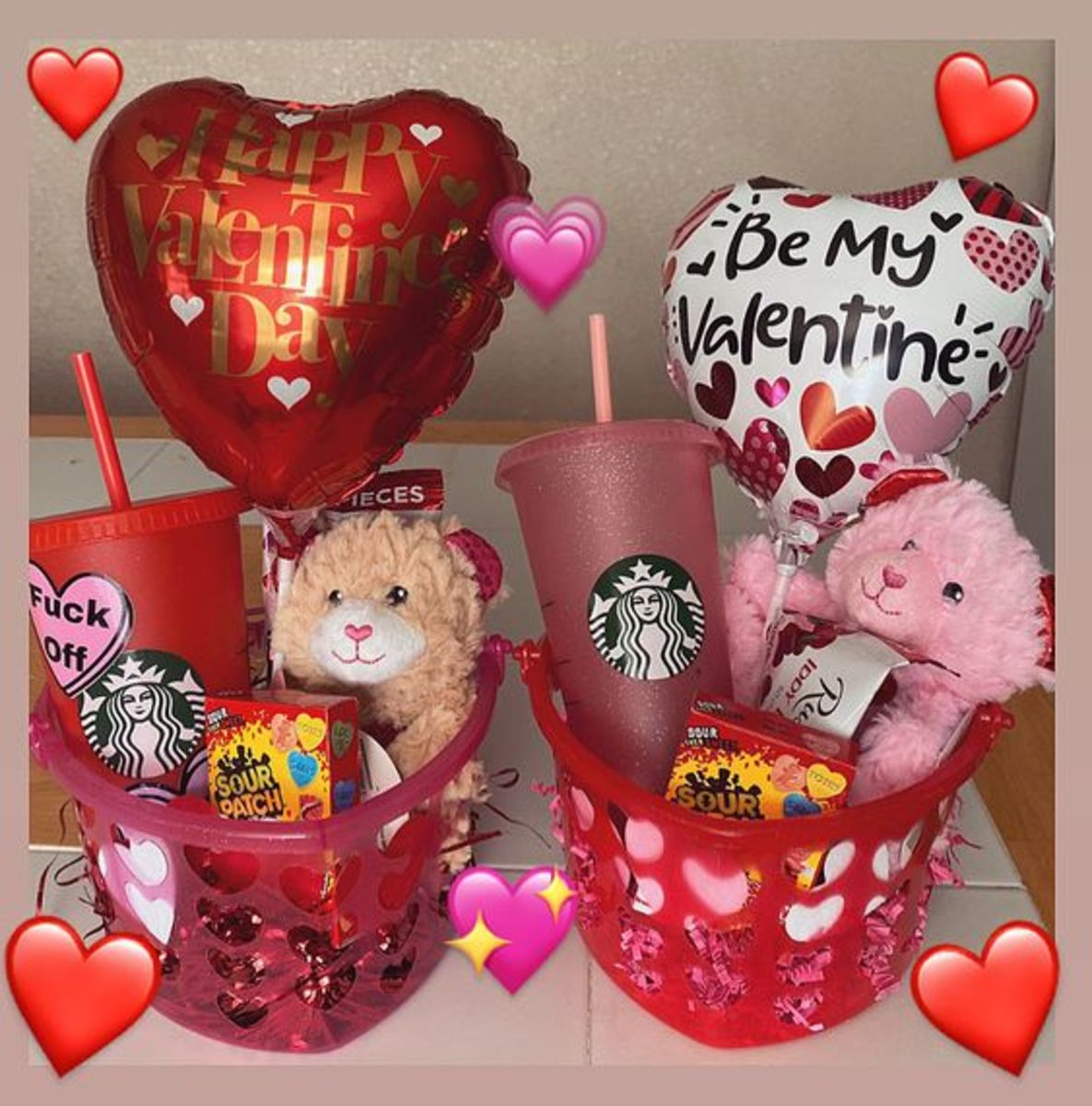Paints Laid Bare: Pigments, Binders, and Solvents
Paints: Pigment and Protection
Most of the paint used today is utilitarian. Cheap, light-fast colors (rust red, verdegris green, ochre yellow) and durable binders are slapped onto bridges, houses, and fire hydrants year after year, to protect them from rust, bugs, and weather.
By contrast, artists' paints are specifically designed for brilliance and longevity. They use rare mineral pigments, some of which do not occur in nature, or are highly toxic. And rather than be resilient to weather for 10 or 20 years, they are designed to last indefinitely if protected from weather.
What's In a Paint?
Paint is a mixture of a pigment, a binder, and sometimes other stuff.
- Pigment: Pigment is a solid, powdery, colored stuff. Basically it's ground-up rocks, soot, or chemical powders. But wait - have you never seen a scarlet rock, or a turquoise one? Sure you have - in jewelry. Bright, pure-colored minerals are rare, and often expensive.
- Binders are sticky goops that hold pigment in place. They can include oils, gums, latex, glue, plastics and other chemicals, or even animal goop like eggs. Dried binders stick to the surface, and some will also seal and protect it. Some binders chemically 'set' and won't wash off, but others can be dissolved again with the right solvent.
- Solvents (or "thinners") are what keeps the paint liquid while you're using it. Water is the most common solvent in the world, but turpentine, mineral spirits, acetone, alcohol, and patented non-toxic solvents are often used.
- Extenders and fillers are cheap pigments (like chalk) that are sometimes mixed into paints, creating a bright, thick color that costs less. A "lake" is another way to stretch color, or convert a liquid dye to a solid pigment.
- Other additives can be added to change the paint's performance. They can make the paint last longer, dry faster or slower, flow smoother, or lie thicker or flatter on the surface. "Crackle" antiqueing is done by layering a slow-drying paint underneath and a fast-drying paint on top (something to avoid if you don't want cracks in your painting).
Choosing Paint for Performance:
Most of the major art manufacturers (Utrecht, Winsor & Newton, DaVinci, Talens/Rembrandt, and others) offer 2-3 grades of paint. The differences are clearly marked: their top line is 'professional' or 'artist-quality' paints, then come 'economy' or 'student-grade' paints. Sometimes they have a distinct brand, such as 'Winton' or 'Amsterdam', for the cheaper alternatives. Lightfast ratings of 1 or 2 (I or II) are considered permanent for professional artists. Most makers also have their own rating systems, which take into account factors like durable binders, purity of color, and opacity or translucency.
Children's paint makers have a different job: to make the brightest, cheapest, least toxic paints. They may mix several unproven pigments or dyes to mimic a popular color. The colors aren't as clear or nuanced as artist paints, and are more likely to fade - they're designed for fun activities rather than durable results.
Even house paint can be used for fine art (and is often the best choice for murals). Be aware that pastel tint have a large amount of white pigment in their base, so you'll have to buy strong / dark colors separately.
It's possible to spend as much as you want on paints; or even to make your own; but few of us have the luxury of unlimited money or time.
Buying Paint on a Budget
Big Sizes, Small Selection: One of the ways I personally economize on Artiste Colours is to buy a few favorite colors in larger tubes, such as Burnt Sienna, Ultramarine, and Titanium White. They are classic, lightfast colors that allow me to mix cool, warm, light, and dark. Then I can get a smaller set of brighter colors like Cadium Yellow, Cadmium Red, Pthalo Green, and Permanent Alizarin, which I won't have to replace as often. I prefer historic mineral pigments over synthetics, because they are stable colors that have been proven over centuries. But I'm willing to try a synthetic if it has a good lightfast rating and interesting color.
Homemade Paints: Some artists make their own oil paints; they say they get more pigment for the same cost, and get a thicker, richer paint as a result. You need a glass slab and grinding pestle to do this, and you have to be more careful with the (toxic) powders than you would with prepared paints, but it's not very complicated.
Natural Paints: I have begun exploring natural paints with milk, wheat, or clay binders. Results have been pretty good for interior decorating, although it is tricky to match the exact color from batch to batch. Unused milk paint spoils; no saving it for touch-ups. We write down the recipe, and measure pigments carefully, and it comes out OK. The cost for lime/clay/milk paint from scratch works out to $8-$15 per gallon, compared to about $25/gallon for latex paint. On the other hand, it tooks 2 coats to cover in most places. You can also get prepared natural paints in a nice range of colors, at prices comparable to other commercial paints. It's certainly a lovely soft finish, and doesn't stink like the commercial paints.
Lakes and Tints: Another economy that many manufacturers offer is "Lake" colors. They take the pigment, or a similar dye, and use it to stain the surfaces of a lot of microscopic white rocks. The result is more paint, usually bright, whitish, or opaque instead of translucent. You're getting less pigment for your money, but it usually costs less for the same coverage. If you like the bright colors there is nothing wrong with lakes. Lake colors are also used for pigment food color: they are the same non-toxic colors as food dyes, but are trapped on solid particles and won't bleed across delicately frosted cakes or novelties.
Surface Features: Don't economize by using the wrong paint for a surface. Some paints are carried more deeply into a surface, to bond with the substrate like fresco or rock art. But most paints stay atop the surface like a skin. This is why surfaces with 'tooth' can hold paint better, and why many paints crack or peel away from slick surfaces. Sanding a surface, or priming it with the right primer, can save you money in the long run because you won't have to replace your failed paint!
Budgets and Creativity: One final word of advice from a good art teacher: You must not worry about the money while painting. You will have enough struggles in learning to make good art. Once you have purchased the paint, thank yourself for the gift, and encourage yourself to enjoy it. The only way to get your money's worth out of paint is to use it! Get it on the canvas, take it off again if you need to, and paint something marvelous.
Historic and Modern Paints
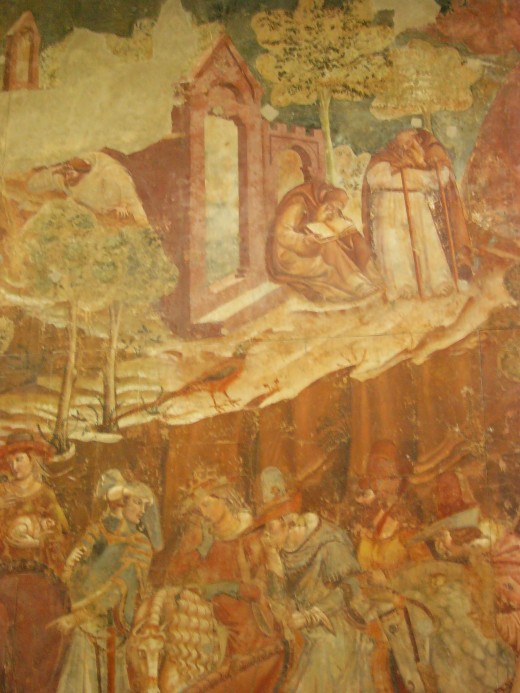
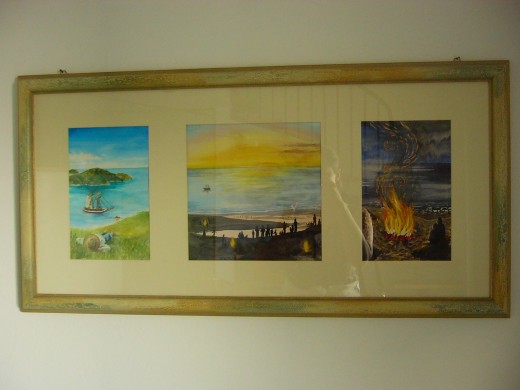
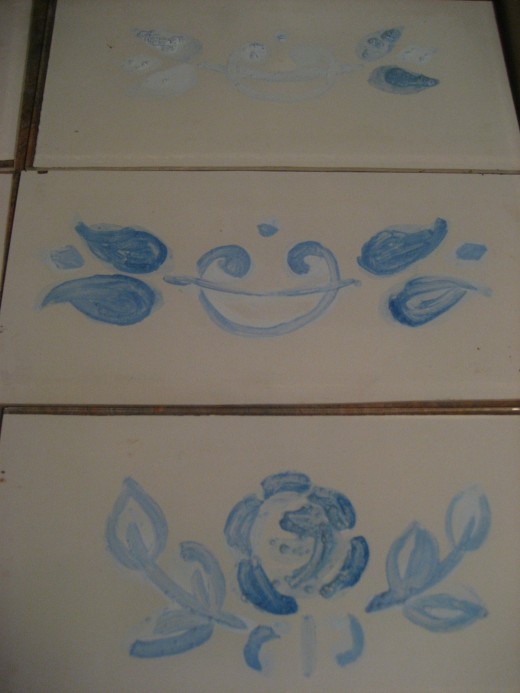
Comparing Types of Paint
Professional Artist Paints:
Oil Paints: Mineral or synthetic pigments, suspended in a base like linseed oil which will cure as it dries. Remains wet and workable for several days, then dries by oxidation to form a durable skin. After it is cured, solvents will soften it, but not dissolve it; it has to be peeled off to be removed. Traditionally used on prepared canvas, wood, and art-board, as well as for utilitarian housepaints and protective coatings. Will stick to most surfaces, but oil can bleed through porous ones and affect longevity of both paint and surface.
- Be aware of toxic pigments, take precautions to avoid contaminating food or breathing dust.
- Non-toxic, non-flammable solvents are now available, but many artists still prefer to use traditional materials. Turpentine and mineral spirits are flammable, especially the fumes and rags. Always have adequate ventilation, not only for fire danger but to prevent over-exposure to toxins: you can develop severe sensitivity to solvents and be unable to continue oil painting. Store solvents in a metal cabinet, and discard oily rags in a metal receptacle, or wash them immediately in a sink (not an electric washer).
- Water-mixable oil paints end up indistinguishable from regular oils, but they can be deceptive to paint with. A water and oil emulsion gets milky, and it can be hard to tell if you're putting on an opaque pink layer, or a milky red glaze that will dry translucent. Same thing happens with acrylics.
- The main reason we love oils is their wet, deep, gorgeous color that stays the same over time. You can play with the painting until it is perfect, mix in dryer or wetter solvents to adjust drying time, then let it cure and the colors don't change. The only down side is the nasty solvents, and sometimes it's hard to make sharp lines.
Watercolor Paints: Fine pigments suspended in a water-soluble binder, traditionally Gum Arabic or Acacia Gum. Traditional watercolors are translucent. Opaque watercolors are called 'gouache,' and have opaque pigments or fillers. Both types of watercolor paints can be purchased either wet (in tubes) or dry (in little paint palletes or blocks). Watercolors are just for art; they do not offer much protection to the surface. They are made with the same pigments as oil paints, so take the same precautions for toxicity. Always clean up watercolors responsibly, as the rinse water may be toxic.
- Watercolors rely on the brightness of the paper. Some colors will dry lighter than they went on. They are hard to alter once dry, though you can re-coat an area a few times. Too many layers can get muddy.
- Traditional watercolor painting involves planning ahead or light sketching, painting light washes and leaving areas blank, then coming back and filling in with darker colors and details. Avoid the temptation to re-visit a wet area too soon. Try fancy supplies like rubber 'resist' to protect white areas behind washes, rock salt for dappling, shaped brushes for landscapes.
- Great for landscapes, studies, and illustrations. Highly portable (can be done on-site with easy clean-up). Can also be used to color line art or drafting. Generally bright or pale colors; can combine well with India ink for contrast.
Inks: India ink is fine carbon-black pigment in a water or alcohol base, with a binder. The traditional binder is pine resins from the same smoke as creats the sooty pigment, but synthetic binders can be used for variations in permanence. Colored inks and other 'black' inks can be pigments, dyes, or stains (dyes penetrate the material, rather than remaining on the surface, and are not technically paints; stains go partway in and blur the distinction).
- Most water-based inks can be used like watercolors or even blended with them. Water down substantially for shades of grey or pastels.
- Great for traditional techniques like calligraphy, Chinese brush-painting, and dark watercolor styles. Can be used with water for nuanced, watercolor-like effects. Also a favorite with illustrators and graphic novelists for saturated contrasts and dark fills.
Acrylic Paints (and latex-acrylic): Pigment suspended in a synthetic acrylic binder, sometimes also with natural latex. Many levels of quality are available. Cheaper grades usually include 'filler' pigments such as Titanium White (or worse, chalk). These make the paint brighter and more opaque while using less expensive pigment; but they are prone to fading with light and wear. Water-washable when wet, acrylics dry quickly to form a flat, permanent skin. Additives are available to create special effects like oil paint (gloss, drying extender, 3-D gels), pearlescence, textures, and fluorescence.
- Works on almost anything: binds firmly to porous and semi-porous surfaces; and will even stick to some non-porous surfaces. To lift paint from unwanted areas (such as house windows), soak it first and then scrape off.
- Sometimes used as a substitute for oils, by people with solvent sensitivities or limited time and space. Ventilation should still be available, as most acrylics offgas ammonia and other solvents, but the water-based cleanup is much friendlier. Paint can be somewhat milky when wet, drying darker; but this is not a problem if you are scanning a painting and can tweak the colors in processing.
- A good choice for commercial art. Quick-drying and opaque, it allow for quick layering of colors, and for quick changes to suit your clients. Flat layers photograph well. Bright colors, dries quickly so blending large areas can be tricky, but sharp edges and distinct colors arre easy to do.
- Also a good choice for murals, wall details, washable decorations and toys. Sturdy, brightly-colored skin is durable even without a second coating; and can be clear-coated for added protection.
Tempera Paint or "Poster Paint": Pigment (and extenders) suspended in a water-soluble base. Traditionally made with egg, store-bought versions are synthetic. Can be combined with acrylics. Most popular versions are sold for kid-friendly art projects, so non-toxic (but fugitive) colors are common, and binders may not be permanent. Washable versions available.
- Works on most surfaces, at least temporarily, including paper, canvas, pottery, walls, and windows. 'Washable' generally means clothing, hair, and cupboards; I have yet to see a paint that would "wash" cleanly off of art paper or delicate surfaces.
- You can mix a little soap into water-soluble tempera to create a washable version for window-art or playtime. May still stain fabrics. To remove, wipe with water, wait a few minutes if needed, then scrape or scrub off.
- Non-toxic varieties are great for finger-painting, footprints, facepaint. Professional pigment versions were traditionally used for fresco (painting on fresh plaster). Great for craft projects like plaster or paper-mache, and for practicing painting techniques with extra hassles.
Special Paints for Special Purposes:
Grease Paint: A stage cosmetic, pigments are suspended in a non-drying oil or grease. Paint is safe to apply to human skin, remains flexible, and stays on for a long time. Washes off with difficulty and a lot of soap and water. Comes in sticks, tubes, and dishes.
- Great for intended use: temporary, wearable art. Theater, Halloween, clown faces. Not great for permanent art, as its oils can remain tacky indefinitely.
Fabric paints, "puff paints," gel paints - Pigment or dye suspended in a goopy, flexible material. Generally provided in squeeze-tubes or bottles, or as a paste in jars. Opened containers may congeal if unused. Glitter settles; stir glittery, pearlescent, or metallic colors before using.
- Great for writing or drawing on clothing, banners, and can also be used on paper or as a highlight on other projects. If the squeeze tube is not cooperating, put some into a dish and use a (disposable) stick or paintbrush.
- Some kinds are designed for printing inks or silkscreening. Some kinds need to be ironed to set permanently; others are no-iron; others are washable. Thick fabric paint can crack or create holes in fabric.
- Can be used on other objects, but generally not designed for permanent color or strength.
Wax (Encaustic and finishes): Wax is used as a binder for pigments, or (heated) as a paint or finish. All waxes are mixtures of different substances, so the mixture softens before melting, unlike pure solids or liquids. This makes it handy for mashing onto surfaces. If heated and poured or rubbed in, it forms a smooth, water-resistant coating as it cools. Most waxes and their solvents are flammable, so use care when heating.
- Encaustic art has lovely deep colors when new, but tends to form a 'bloom' of small wax crystals if exposed to damp or temperature differences. Bloom can be burnished off or melted if the surface texture allows.
- Great for: Art that is hard to damage when finished - will be more waterproof than the substrate in most cases. Can be used to coat and seal other paints, plasters, or earth-based art.
Natural Paints: Clay, Milk, and Lime - Pigments and binders blur in this category, which includes whitewash, natural paints, and old-fashioned barn paint. Pigments can include commercial pigments or paints, natural minerals, clay, lime, and plant extracts. Binders can include the clay itself, dairy casein, borax/casein, glue, oil, wheat paste, latex, or egg yolks. In rock art and cave paintings, a wide range of animal and plant fluids were used for binders.
- Great for all-natural interior decorating, outdoor art, fresco painting, alis (wheat glaze over plaster) or make-your-own-paint projects. Non-toxic pigments are available, and the entire process can be non-toxic if suitable precautions are taken against dust. Can be finished with wax or oil for protection from moisture, especially on wear surfaces like furniture.
Enamels, Shellacs, and Epoxies: Pigment (or dye) suspended in hard-drying, water-resistant medium. Can be a solvent-based coating (shellac), a heat-based coating (glass enamels), or a chemical-set coating (2-part epoxy paints). Generally limited color choice, although custom colors may be available. Intended as durable, washable, waterproof, hard-wearing surface treatment, protects surfaces from moisture, air, and UV damage. Can be applied by brush or roller, but commercial shops often have airbrushes or anode/cathode paint applicators to ensure an even coat. (These things get expensive! And brush streaks are wasted paint). Can be finished with a clear coat or polish in most cases.
- Great for cars, boats, appliances, furniture, and durable goods. Form hard, protective, permanent coatings on nonporous surfaces such as metal, fiberglass, and ceramics. Sometimes used to add color to jewelry, protect wood or furniture, or as an art medium in itself. Stencils and masks can help create custom details on cars and boats.
-Fingernail enamel is a solvent-based paint (acetone or similar solvents), and can often be used for minor repairs to chipped enamels like car paint or bathtub enamel. It is also used for marking museum collections, as it is difficult to rub off but can be cleanly removed from most surfaces with the right solvents.
Clear coatings can be obtained for most art media. A coat of clear varnish, acrylic, polyurethane, etc. can protect the art from UV, spills, and other minor damage. Pigments can be floated in clear coatings for an extra layer of subtle color.
If you don't want to risk damaging a painting with a clear coating that might react or turn yellow with age, you can consider UV-blocking glass for its frame or nearby windows.
Or just paint whatever strikes your fancy, and leave the preservation for the curators.
Curious about Other Art Media?
What Are You Talking About? I Can't Paint a Barn Door! - Getting Started
...yes but i like to draw with dots of precisely 0.3 millimeters separated by hygenic white areas... - Pens and Inks
Is Watercolor Pencil a Paint, or a Pencil, or What? - Pencils, Crayons, and Charcoal

